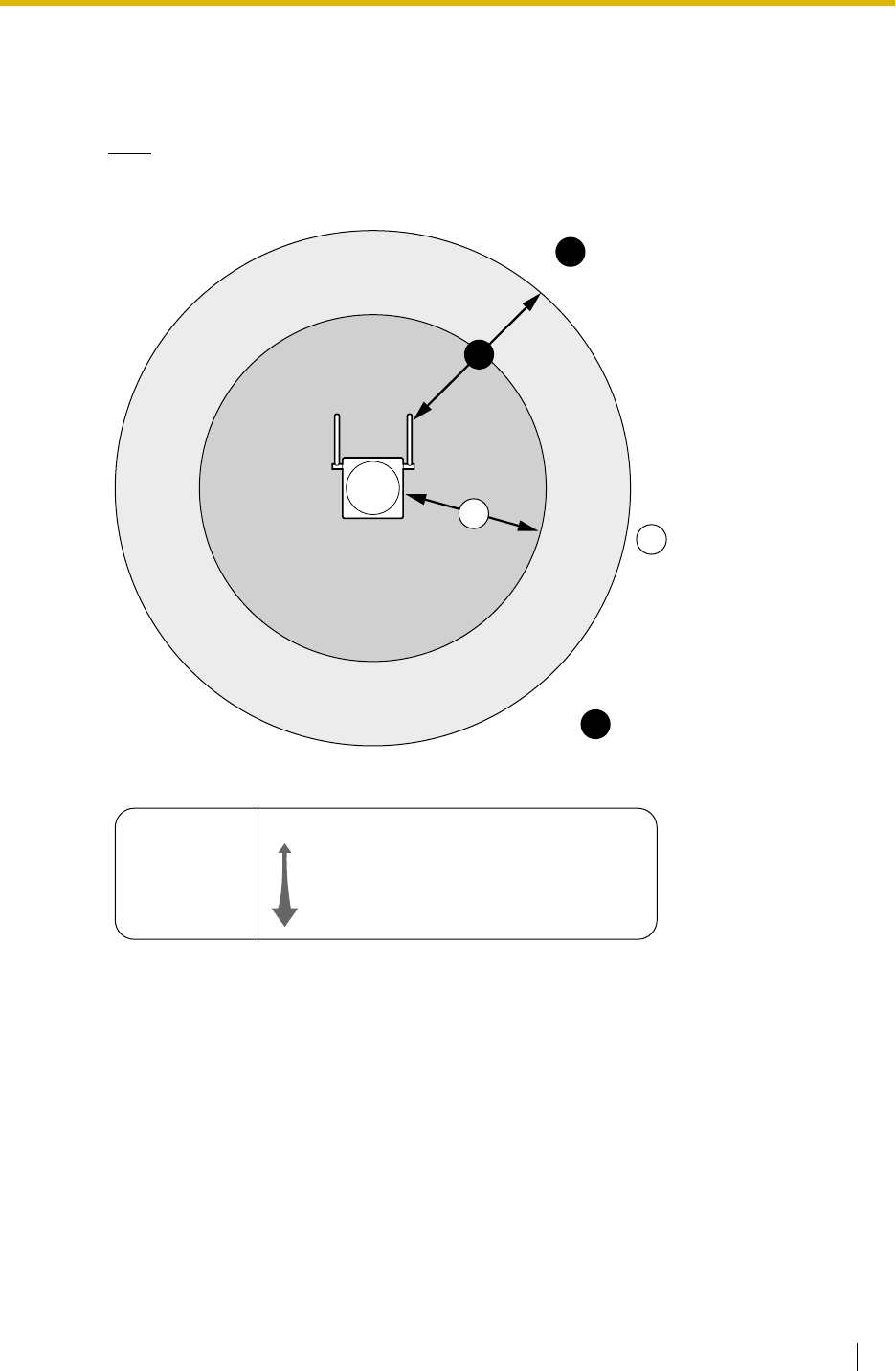
2.8 Connection of 2.4 GHz Portable Stations
Installation Manual 113
CS Coverage Area
The example below shows the size of the coverage area of 1 CS if it is installed where there is
no obstacle.
Note
Radio signal strength levels are measured during the site survey (refer to "2.8.5 Site
Survey").
Site Survey Preparation
1. Obtain the map and investigate the installation site.
a. Check the obstacles (e.g., shelves, columns, and partitions).
b. Check the materials of the structures (e.g., metal, concrete, and plywood).
c. Check the layout and dimensions of the room, corridor, etc.
d. Write down the above information to the map.
2. Examine the service area demanded by the user on the map, referring to the following
example.
a. Draw the coverage area around a CS. Extend the coverage area to 30 m to 60 m in
one direction, depending on the materials of the building structures and obstacles in
the installation site. Note that a CS cannot be installed outside a building.
Gray Zone:
Conversation will be
intermittent
Coverage Area
Radio signal strength level is
greater than "3".
(About 50 m to 60 m)
Good Coverage Area
Radio signal strength
level is greater than "8".
(About 30 m to 40 m)
Good conversation
will be kept.
Out of Service:
Cannot make/receive calls
A
B
A
B
Radio Signal Strength Levels
Out of range
Catches noise easily or disconnects
May catch noise
Good
Better
Level: 00
Level: 01 to 02
Level: 03 to 07
Level: 08 to 10
Level: 11 to 12
C


















